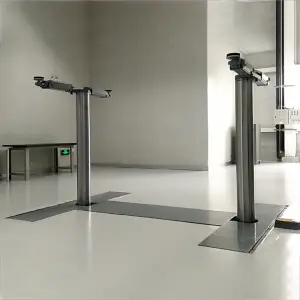Cylinders are one of the most common three-dimensional shapes we encounter in our everyday lives. From the cans we use to drink soda to the tubes that transport liquids in our cars, cylinders are everywhere. But what exactly is a cylinder and how are they used in different contexts?

The Many Uses and Shapes of Cylinders in Everyday Life
A cylinder is a three-dimensional shape that has two parallel, congruent circular bases and a curved surface that joins the two bases. The height of a cylinder is the distance between the two bases, and it is perpendicular to the bases. The volume of a cylinder is calculated by multiplying the area of the base by the height, while the surface area is calculated by adding the areas of the two bases and the lateral surface area.
One of the most common uses of cylinders is in containers and packaging. Cans, bottles, and jars are all examples of cylinders that are used to store and transport liquids and other goods. Cylinders are preferred in these cases because of their efficiency in maximizing storage space and their stability in standing upright on a flat surface. Cylinders are also commonly used in pressure vessels, such as gas cylinders and fire extinguishers, because their shape can withstand high internal pressure.
Cylinders are also used in engineering and construction, particularly in hydraulics and pneumatic systems. Hydraulic cylinders are used to create linear motion through the use of a piston within a cylinder that is filled with hydraulic fluid. This system is commonly used in heavy machinery, construction equipment, and even doors and windows that require automated opening and closing mechanisms. Pneumatic cylinders work in a similar way but use compressed air instead of hydraulic fluid to create motion. They are used in manufacturing plants, robotics, and other applications where precise and controlled movement is needed.

The Many Uses and Shapes of Cylinders in Everyday Life
In mathematics, cylinders are often used to teach students about geometry and three-dimensional shapes. The properties of cylinders, such as volume and surface area, are important concepts in mathematics and are often included in standardized tests and curriculum. Understanding how to calculate these properties not only helps students develop their problem-solving skills but also provides a practical application of mathematical concepts in real-world situations.
Cylinders come in many different shapes and sizes, not just the traditional upright canister shape. There are oblique cylinders, where the bases are not parallel to each other, and hollow cylinders, where the sides are curved inward instead of outward. These variations in shape allow cylinders to be used in a wide range of applications, from manufacturing to architecture to art.

The Many Uses and Shapes of Cylinders in Everyday Life
In conclusion, cylinders are versatile shapes that are integral to our daily lives in more ways than we may realize. From the cans we drink from to the hydraulic systems that power our machinery, cylinders play a crucial role in many different fields. Understanding the properties and uses of cylinders can help us appreciate the importance of geometry and three-dimensional shapes in the world around us. So the next time you reach for a can of soda or see a hydraulic system in action, take a moment to appreciate the simple yet powerful shape of the cylinder.k Lift Accessories



